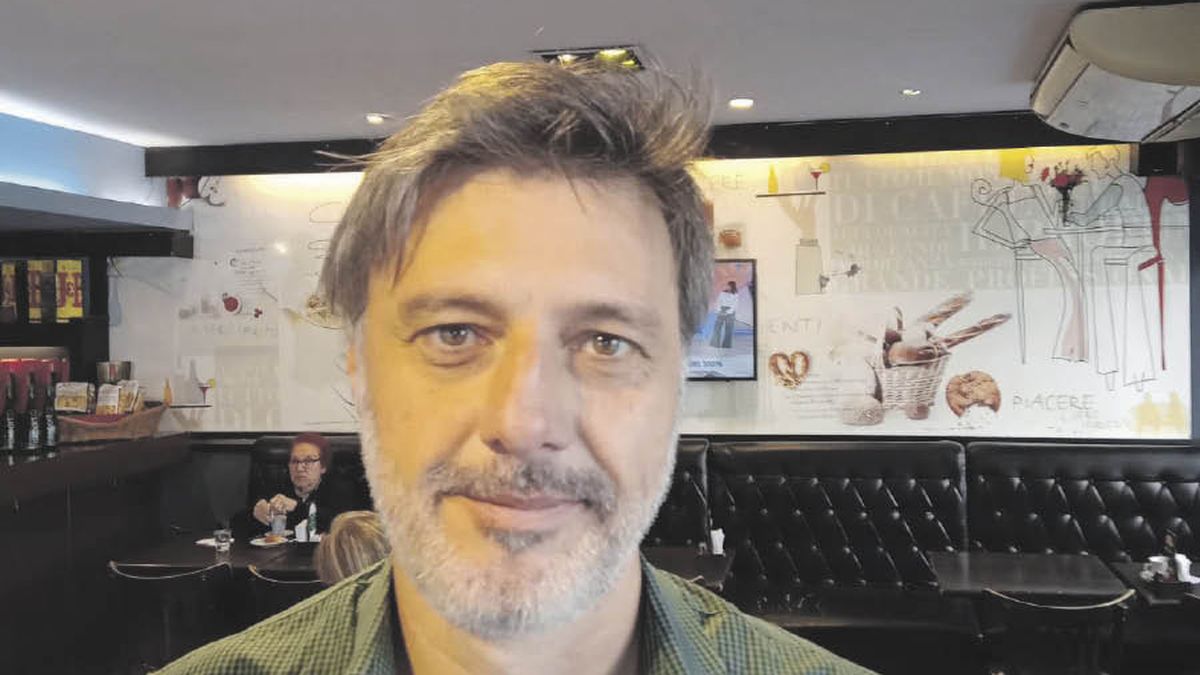Andrew Beard: For the first time there has been a sculpture by the Valencian Rafael Guastavino in Spain for four months. With my book, with other books, with a documentary about his life, he has finally had his vindication. The sculpture is wonderful, Guastavino has in one hand, on his head, the rod that he used to measure the curvature of the domes he built, that of the Grand Central Station, that of Saint John, that of the Queensboro Bridge, and in the another hand has a hat, which makes him look like a conjurer, a trickster. They have ignored him for a century and when they got him back he was like a swindler, like a fourth-rate wizard. Interesting, right? Guastavino was never able to return to Spain because he was persecuted by the courts for having left with a securities scam.
Q.: In fact, in the United States, you patented a Spanish-Arabic medieval architectural form as your own and became rich. Was you an early adopter of post-truth?
AB: No, Guastavino’s theme is that of identity. How identity is built both in an individual and in a nation. Guastavino arrived in a country that did not have an architectural identity, which is like a teenager. A teenager is a great engulfer of things, he appropriates them, remakes them to build an identity. That identity is a Frankenstein, a fiction that only works if we believe it. When you stop believing the fiction of your own identity, a break occurs, both at the individual and national levels. We are seeing it today in many countries. Both in Spain and in Argentina. The polarization compromises the shared narrative that we had. There is a collapse of national identity narratives, so we have to re-resolve who we are in common. Guastavino arrived in the United States, a country that has not yet been defined, with a patent that he has stolen. What’s interesting about this is that this highlights how all identity is a fiction and a misappropriation. Identity is an issue as central and contemporary as post-truth, which is so installed that we no longer perceive it as a dilemma.
Q.: Is it the great theme of this century?
AB: When the debate on post-truth, of factual facts against sentimental facts, was installed, it seemed to us the beginning of the apocalypse; we go into the dark. However, we have entered hopeless darkness. Post-truth is installed in the worst possible place, in international politics, and yet we have not died, which speaks of the enormous capacity of human resilience, that of digesting the indigestible. Post-truth is the great political, philosophical and anthropological issue, and we have to see how we resolve it.
Q.: Especially when ideas that seemed to have disappeared resurface…
AB: Populism, cancellation, that we live our political ideas as if they were football teams and not as questionable political parties. It is fearsome what is happening around us, there are the elections in Italy…
Q.: It is remarkable how the idea of canceling socially, morally, economically, organizations or people has spread…
AB: I am writing about it. A book about deletion, the right to be forgotten, the cancellation policy, movements as contemporary as historical. What cancellation culture seeks is not to defenestrate someone but to erase them. It is not about humiliating him in the public square, but pretending that he never existed, erasing him from history. It is something as old as civilization. In the Roman Empire, when an emperor died, Caligula, for example, the Senate met and, this is amazing, decided that he had not existed, made a decree of abolitio nominis and went out to decapitate his statues and replace them with the heads of other emperors, prohibited and removed his name from everywhere. There is a great tradition in Western political culture of erasing the adversary from history, pretending that he never existed, agreeing that he no longer exists. Here it happened at one point with Perón, and it failed. In cases like this, irony serves to vindicate. The first political amnesties went like this: the Peloponnesian War has not taken place. That is what today recovers the culture of cancellation, the abolitio nominis, a denial of existence.
Q.: How do you plan that book?
AB: As in “Life of Guastavino and Guastavino” they will be biographies. One of my big doubts when writing the book about the Guastavinos was how to make a biographical narrative. Especially in this case where the son inherits the father, and people thought he was the same person. In a biographical narrative should we keep the confusions that actually occurred in life? Create an amorphous character where father and sons were indistinguishable? Does the family business annul the individual by grouping him into an anonymous Guastavino who lives like an anonymous vampire through the generations? In the new book, there will be three biographies, which will be three stories of erasure, of cancellation, one related to art, one to history and one to life, but first, at the beginning of next year, a ghost novel will appear .
Source: Ambito
David William is a talented author who has made a name for himself in the world of writing. He is a professional author who writes on a wide range of topics, from general interest to opinion news. David is currently working as a writer at 24 hours worlds where he brings his unique perspective and in-depth research to his articles, making them both informative and engaging.



